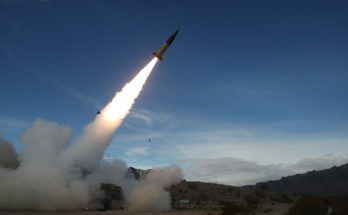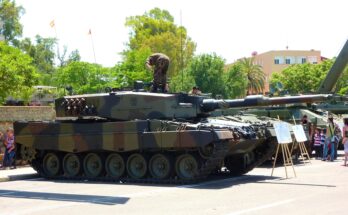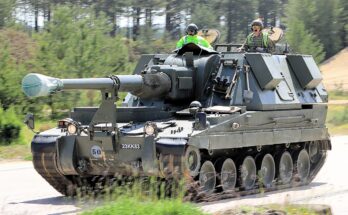
The Russo-Ukrainian War has generated a lot of talk about which weapons are changing warfare. Well, let us add some more to all that noise.
There is a lot of talk about drones. Yet these drones will fuel demand for other systems. The weapon that will benefit from the experience gained from this conflict is air defense systems, especially mobile ones.
The Russo-Ukrainian War has seen the heavy use of unmanned attack drones against land-based and maritime targets. This war has found the air defenses of the Ukrainian and Russian armies and navies lacking.
Kyiv’s Western allies quickly delivered air defense systems to strengthen its land-based capability. These deliveries include anti-aircraft guns and surface-to-air missiles (SAMs). The systems proving the most useful are those mounted on mobile platforms, especially on tracked vehicles. Ukraine has used mobile air defense systems to move from place to place, and reinforce threatened areas. The employment of mobile systems makes it more difficult for Russia to suppress them.
Meanwhile, the Russian Navy’s Black Sea Fleet has been hit hard by aerial and surface attack drones. Improving the air defense capability of its warships will take longer. This shortcoming will probably not be addressed until after the war. Still, navies are taking note of these events and will need to provide their warships with better protection against these threats. Navies could decide to add back the anti-aircraft guns that protected warships during the Second World War but were slowly removed in the decades after.
Of course, the desire to field more air defense systems might not last long after the guns on the frontline fall silent. Besides purchasing more weapons, Western governments want to expand their arms production capacity. This will require large sums of money. Funding that could easily be redirected to “new” priorities once the war ends.
For more than 35 years, Larry has been involved in research and analytical work for various Forecast International projects. He has contributed to the Airborne Electronics Forecast and was chief editor on the World Aerospace Weekly newsletter. Larry was directly responsible for the creation of World Weapons Review, a biweekly industry market research publication specializing in weapon systems and related material. He was the creator of Unmanned Vehicles Forecast, launched to cover the growing market for civil and military drones, and was involved in the development of the Airborne Retrofit & Modernization Forecast service. He is currently responsible for the Missile Forecast and for FI's two Unmanned Vehicles Forecast services – Airborne Systems and Land & Sea Systems.




